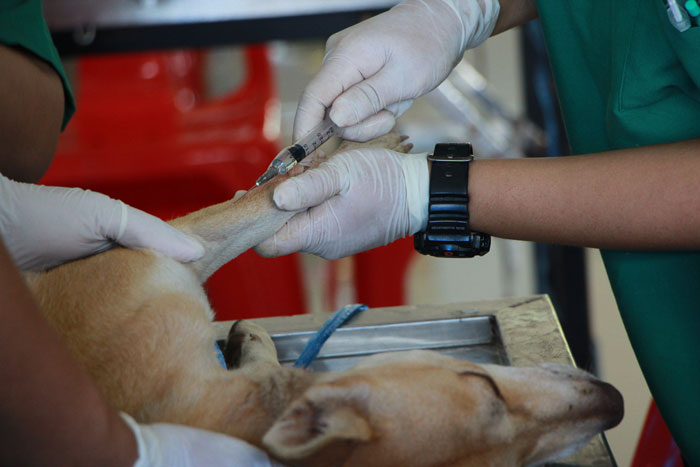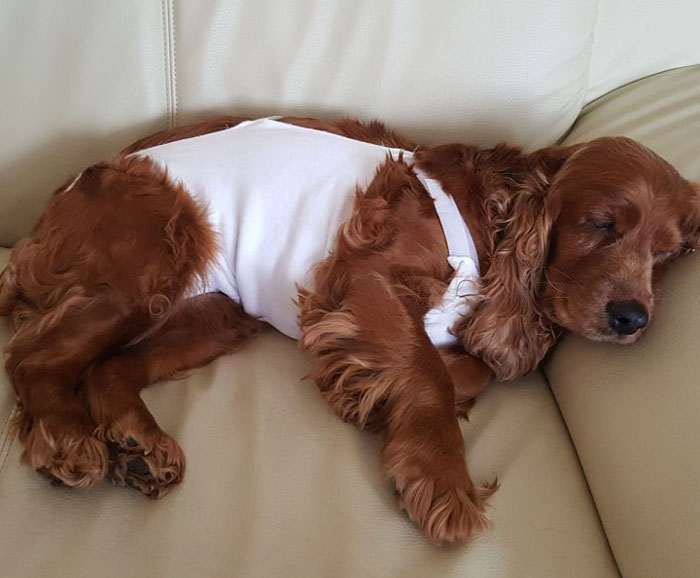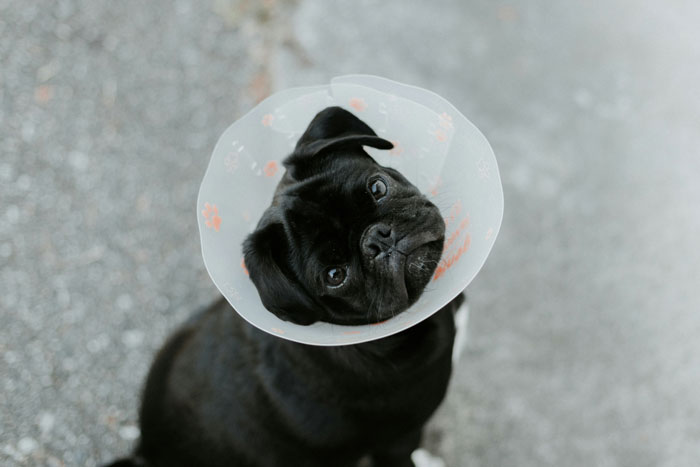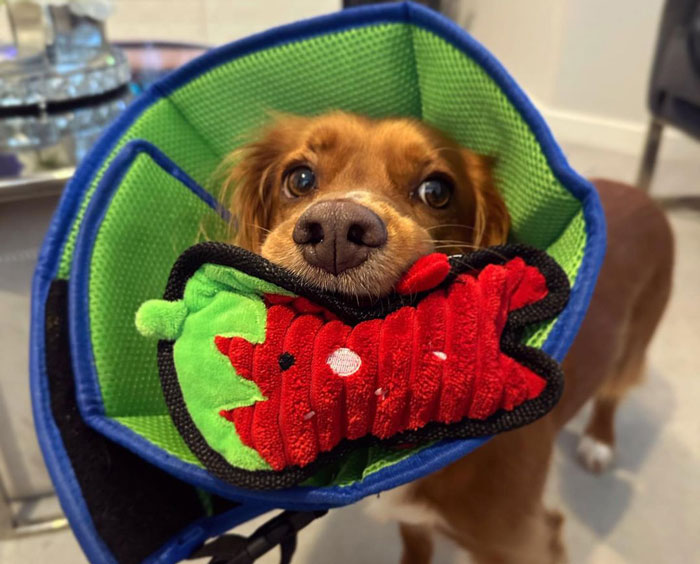Neutering or spaying your dog can have many benefits, including reducing certain health risks and behavioral issues. However, the process of recovery after a neuter or spay surgery can be a daunting and challenging time for both the pet and the owner.
A smooth and comfortable recovery is essential to reduce any pain and discomfort and speed up the healing process. In this article, we will provide you with everything you need to know to help you navigate your dog’s recovery process after neutering or spaying.
HighlightsNeuter/spay can reduce health risks and behavior issues in dogs.Pain management and complication prevention are vital post-surgery.Surgery site care is crucial for a smooth recovery process.Diet and restricted activity are important during recovery.Watch for post-surgery changes and seek vet care if needed.
The information provided herein is for informational purposes only. Please refer to ourdisclaimerfor more details..
Table of ContentsUnderstanding Dog Neuter and Spay SurgeryThe Day of SurgeryThe First 24 Hours After SurgeryMonitor Your Dog’s BehaviorManage Pain and DiscomfortPrevent Complications at the Surgery SitePost-Surgical care after Spay and Neuter SurgeryCaring for the Incision Site for Smooth RecoveryPreventing Your Neutered Dog from Licking or Scratching the AreaSupporting Overall Healing ProcessFeeding and Activity Guidelines During Recovery PeriodWhat Behavioral Changes should You Expect After Neutering?How Long Will It Take for the Dog to Recover After Spaying or Neutering?Normal Post surgical issues during recovery not requiring a Veterinarian’s AttentionWhat are the factors that may delay neuter or spay recovery?Potential Complications of Neutering or Spaying: When to Seek Veterinary CareConclusion: Dog Neuter Recovery
Understanding Dog Neuter and Spay Surgery
Image credits:Dog Neuter and Spay Surgery

Neuter surgery and spay surgery are common procedures that involve the removal of reproductive organs from pets. Neuter surgery is performed on male dogs, while spay surgery is performed on female dogs.
These procedures not only help prevent unwanted birth but also provide significant health benefits for pets, for instance, a reduced risk ofmammary cancer, no risk of pyometra in females and testicular and prostate cancer in males.
The surgery can be safely done in a puppy of 6 months of age, a female can be spayed between 6 to 9 months, and preferably before the first heat.
During these surgeries, a veterinary surgeon will administer anesthesia to the pet before making an incision in the abdomen. The veterinarian will then remove the reproductive organs and close the incision with sutures or staples. While neuter and spay surgeries are considered routine, it is still a major surgical procedure that requires proper postoperative care to avoid complications.
The Day of Surgery
The day of surgery is a significant one for your furry friend, and it’s essential to prepare them adequately for the procedure. Ensure you follow your veterinarian’s pre-surgery instructions to avoid any complications.
Make sure you have taken any preoperative precautions your veterinarian has recommended, such as fasting your dog beforehand, and provide your dog with comfort and reassurance. It is common for pets to be anxious during the surgery, so holding their paw or petting them could offer little comfort.
Note that after the operation, your dog will probably experience mild nausea and grogginess for several hours. Therefore, it is advisable to avoid feeding your pooch until the veterinarian recommends it.
The First 24 Hours After Surgery
Image credits:melony_20

After your dog’s neuter or spay surgery, it is important to provide a comfortable and safe environment for their recovery. The first 24 hours are crucial for monitoring your dog’s behavior and managing pain and discomfort. Here are some tips for a smooth recovery:
Monitor Your Dog’s Behavior
Observe your dog closely for any signs of discomfort or unusual behavior, such as excessive licking or scratching of the surgery site. It is normal for your dog to be drowsy and uncoordinated after the surgery, but if you notice any signs of distress, contact your veterinarian immediately.
Manage Pain and Discomfort
You can also place a warm compress on the surgery site to help reduce swelling and discomfort and provide toys to calm the dog.
Prevent Complications at the Surgery Site
It is important to prevent your dog from licking, biting, or scratching the surgery site, as this can cause infection or delay the healing process. Your veterinarian may provide an Elizabethan collar to prevent your dog from accessing the surgery site.
By following these tips, you can help ensure a smooth and comfortable recovery for your dog during the first 24 hours after neuter or spay surgery.
Post-Surgical care after Spay and Neuter Surgery
Image credits:Priscilla Du Preez 🇨🇦

During the recovery period, it’s essential to take proper care of your dog to ensure a smooth and comfortable healing process. Here are some practical tips for managing your neutered dog recovery:
Caring for the Incision Site for Smooth Recovery
Preventing Your Neutered Dog from Licking or Scratching the Area
It’s natural for dogs to lick or scratch at the incision site, but this can lead to infections or reopened wounds. Consider using an e-collar or other physical barriers to prevent your dog from accessing the area. If you notice your dog is continuously trying to lick or scratch, talk to your veterinarian about alternative solutions.
Supporting Overall Healing Process
Remember, every dog’s recovery period can vary, but generally, it takes about ten to fourteen days for dogs to heal from neuter or spay surgery. By following these tips and remaining patient and attentive to your dog’s needs, you can help ensure a smooth and comfortable neutered dog recovery.
Feeding and Activity Guidelines During Recovery Period
Image credits:nuggy.pup

During the recovery period, it is important to feed your dog a balanced diet that promotes healing. Avoid overfeeding or suddenly changing your dog’s diet.
It is advisable to keep fresh water for drinking close to your pet, do not offer food right after your dog recovers from anesthesia because the dog stays nauseous for a few hours after surgery.
Offer a small amount of food after the dog completely recovers from the effect of anesthesia.
Your dog’s activity should be restricted during the recovery period of first two weeks to prevent any strenuousexercisethat could damage the incision site or slow down the healing process, stop walking your dog for at least a week. Avoid activities like jumping and running as it may put pressure on the abdomen.
Although your dog may be still, it is essential to provide them with opportunities to move around, stretch and receive mental stimulation.
What Behavioral Changes should You Expect After Neutering?
After spaying or neutering, dog owners are expected to note some of the long termbehavioral changesas follows:
How Long Will It Take for the Dog to Recover After Spaying or Neutering?
The normal recovery time varies depending on the age and overall health status of your pet, healing is delayed in older, diabetic animals. On the other hand, young healthy dogs recover fairly quickly compared to old dogs. However, in general, complete recovery takes place within 10 to 14 days post surgery.
Normal Post surgical issues during recovery not requiring a Veterinarian’s Attention
You may notice some of the changes regarding behavior like nausea, crying, restlessness that may last for a day, these issues are normal and are side effects of anesthesia and resolve in no time. Other issues that resolve on their own includes the following:
What are the factors that may delay neuter or spay recovery?
Pet owners should consider the above mentioned factors as they may delay the healing time of the incision:
Potential Complications of Neutering or Spaying: When to Seek Veterinary Care
Although rare, complications can occur during your dog’s recovery process after neuter or spay surgery. Signs of internal bleeding, such as lethargy, vomiting, pale gums, and rapid breathing, require immediate veterinary attention. Other issues to watch for include discharge or bleeding from the incision site, increase in swelling, persistent redness, or signs of infection.
If your dog is recovering from surgery and exhibits any unusual symptoms, it is essential to seek veterinary care promptly.
Conclusion: Dog Neuter Recovery
Congratulations on making it through this essential guide to dog neuter and spay recovery! By following the expert tips provided in this article, you can help ensure a smooth recovery process for your furry friend. Remember to discuss the procedure with your veterinarian, prepare your dog for surgery, and closely monitor their behavior during the recovery period.
By managing your dog’s pain and discomfort, preventing complications, and gradually reintroducing physical activity and feeding, you can support their healing process and set them up for long-term health benefits. Don’t hesitate to seek veterinary care if any concerns arise, and remember to trust your instincts as a pet owner.
253views253views
Pet Wellness